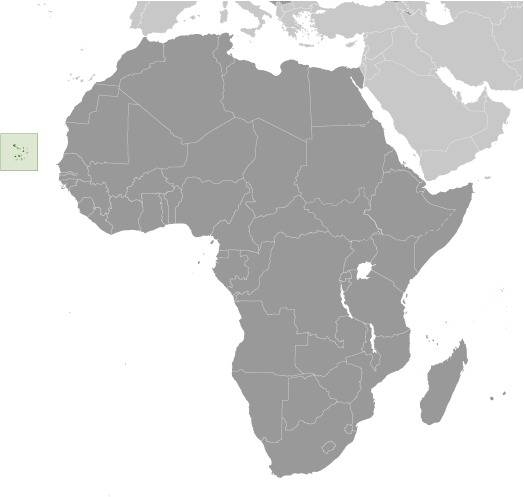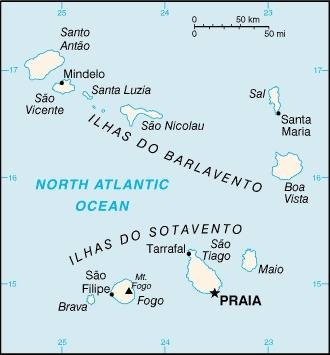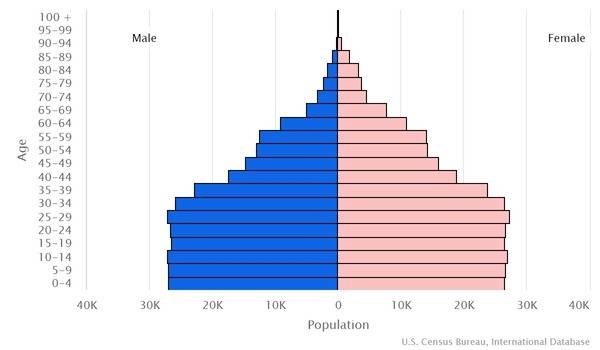Country Summary




Introduction
Background
The uninhabited islands were discovered and colonized by the Portuguese in the 15th century. Following independence in 1975, a one-party system was established and maintained until multi-party elections were held in 1990. Cabo Verde continues to sustain one of Africa's most stable democratic governments and one of its most stable economies.
Geography
Area
total: 4,033 sq km
land: 4,033 sq km
water: 0 sq km
Climate
temperate; warm, dry summer; precipitation meager and erratic
Natural resources
salt, basalt rock, limestone, kaolin, fish, clay, gypsum
People and Society
Population
596,707 (2022 est.)
Ethnic groups
Creole (Mulatto) 71%, African 28%, European 1%
Languages
Portuguese (official), Krioulo (a Portuguese-based Creole language with two main dialects spoken in Cabo Verde and in the Cabo Verdean diaspora worldwide)
Religions
Roman Catholic 77.3%, Protestant 4.6% (includes Church of the Nazarene 1.7%, Adventist 1.5%, Assembly of God 0.9%, Universal Kingdom of God 0.4%, and God and Love 0.1%), other Christian 3.4% (includes Christian Rationalism 1.9%, Jehovah's Witness 1%, and New Apostolic 0.5%), Muslim 1.8%, other 1.3%, none 10.8%, unspecified 0.7% (2010 est.)
Population growth rate
1.21% (2022 est.)
Government
Government type
parliamentary republic
Capital
name: Praia
Executive branch
chief of state: President Jose Maria NEVES (since 9 November 2021)
head of government: Prime Minister Ulisses CORREIA E. SILVA (since 22 April 2016)
Legislative branch
description: unicameral National Assembly or Assembleia Nacional (72 seats; members directly elected in multi-seat constituencies by proportional representation vote; members serve 5-year terms)
Economy
Economic overview
tourism-dominated economy benefits from the country’s relative close proximity to Europe; 2009 Financial Crisis halted economic growth for seven years; leveraging export-based growth; COVID-19 decimated economic growth and recovery; high external debt
Real GDP (purchasing power parity)
$3.36 billion (2020 est.)
Real GDP per capita
$6,000 (2020 est.)
Agricultural products
sugar cane, tomatoes, bananas, cabbages, coconuts, cassava, pulses, vegetables, milk, goat milk
Industries
food and beverages, fish processing, shoes and garments, salt mining, ship repair
Exports
$420 million (2020 est.)
Exports - partners
Spain 65%, Portugal 14%, Italy 8% (2019)
Exports - commodities
processed and frozen fish, mollusks, clothing, scrap iron (2019)
Imports
$1.02 billion (2020 est.)
Imports - partners
Portugal 36%, Netherlands 16%, Spain 11%, China 6% (2019)
Imports - commodities
refined petroleum, delivery trucks, coal tar oil, cars, rice (2019)
Exchange rates
Cabo Verdean escudos (CVE) per US dollar -
Page last updated: Monday, December 05, 2022
